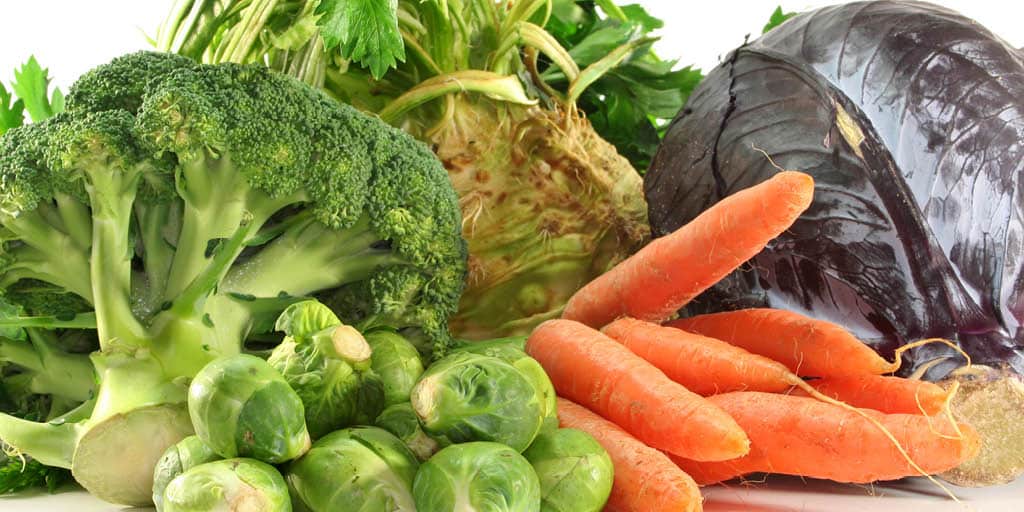The Benefits of Seasonal Eating – Even in Winter!

Eating seasonally has multiple benefits for overall health, especially for older adults.
Those living at Kavod Senior Life – in both Senior and Assisted Living – enjoy a meal plan full of seasonal vegetables, both in main and side dishes. In fact, Kavod provides 35 different kinds of fresh salads over the course of a year!
However, no matter whether someone is a Kavod Senior Living resident, Assisted Living resident or community member, the value is the same for eating what’s in season.
Mental/spiritual benefits
Eating foods grown locally during different times of the year can connect us to the world around us. When we purchase and consume foods harvested in real time (rather than imported from other countries), we can feel grounded and aligned with what is going on agriculturally in our community.
Environmental benefits
Eating seasonally also can improve the environment by burning fewer fossil fuels (for the planes, trains, ships and cars needed to transport off-season foods), supporting local farmers and bypassing supply chain issues.
Physical benefits
Changing eating habits seasonally can offer a change in flavors as well as diverse nutrients (different from those grown in other seasons) and versatility. Since we are in winter, here is a sampling of some current crops and the main vitamins/minerals they contain:
- Squash – A, C and B vitamins, lots of antioxidants
- Carrots – beta carotene, B, C and K1, plus potassium
- Peas – copper, manganese, phosphorus, A, B, C and K1
- Dark leafy greens – A, C, K, folate, fiber, calcium, magnesium, iron and phosphorus
- Brussel sprouts – potassium, C, B6, A, K1, iron, magnesium, phosphorus, and calcium
- Potatoes– B, C, potassium, manganese, magnesium and phosphorus
- Beets– A, C, K1, B2, folate, manganese and copper
- Turnips– fiber, C, potassium and other antioxidants
- Broccoli –sulforaphane and micronutrients
Other health benefits
Nutrient dense foods in general – in whatever season- can help reduce the risk of chronic diseases and fend off viruses or colds, especially common in winter. In addition, eating healthfully can boost your vitality and increase your energy levels, which leads to other positive outcomes such as greater social connection or interest in hobbies. Again, now that it’s winter, it’s a good time to incorporate vegetables like those above or other roots, dark leafy greens, and legumes,
Season’s greetings
Kavod’s Senior and Assisted Living residents can actually grow their own vegetables right on campus, with 45 raised garden beds around the community. Support from outside funders partially supplement plants and seeds for residents in the spring. All summer long, residents enjoy their own vegetables while mentally benefitting from this healthy hobby. A local partner, Ekar Farm, also brings fresh vegetables residents can enjoy for free during summer months.
If you are a loved one would benefit from all Kavod has to offer in both Senior and Assisted Living– meals, gardening and more – contact Melanie Kaye at 720- 382-7833 or MKaye@KavodSeniorLife.org.
Winter recipe To support eating seasonally this winter, here is one recipe that contains many vegetables in one pot of soup. Enjoy – and happy eating!
Super Green Mushroom and Potato Soup Recipe
by dietician Nichole Dandrea-Russert, MS, RDN
Makes 4 large servings
Ingredients:
- 1 cup organic celery (chopped)
- 1 cup yellow onion (or white onion)
- 1 bunch Swiss chard, leaves separated from the stems, stems chopped (about 1 cup chopped stems) and leaves chopped (1–2 cups of leaves)
- 4 medium garlic cloves (minced)
- 3 cups broccoli (cut into 1” florets)
- 2 cups mushrooms (cremini, button or portobello, chopped)
- 1 tbsp. fresh thyme (minced)
- 1 tsp onion powder
- 1 tbsp. Worcestershire sauce (vegan)
- 8 cups vegetable broth (unsalted, preferably homemade)
- 2 cups red potatoes (or other potato of choice, cut into 1” cubes)
Directions
- Heat the celery, onion, and Swiss chard stems in a large stockpot on medium-high heat, stirring frequently until the onions are translucent, about 3–5 minutes. Add 1–2 tablespoons of water as needed to deglaze the pot.
- Stir in the garlic; turn down the heat to medium, and cook for an additional 60 seconds.
- Stir in the broccoli, mushrooms, thyme, onion powder, and Worcestershire sauce. Cook for 60 seconds.
- Pour in the vegetable broth, and turn the heat to high. Once the broth is boiling, add the potatoes and lower heat to simmer until the potatoes are tender, about 10 minutes.
- Stir in the Swiss chard leaves.
- Add seasoning or salt and pepper as desired, to taste
Chef’s Notes
Substitutions
- In place of potatoes, add a favorite (cooked) whole grain to step 5, like barley, brown rice, or faro.
- Use kale, mustard, or collard greens in place of Swiss chard.
- Substitute cauliflower for broccoli.
- Use fresh rosemary or oregano in place of thyme.
Prep Ahead: Cut celery, onion, Swiss chard (separate the leaves and chop the stems), broccoli, and mushrooms ahead of time and store in airtight containers in the refrigerator for up to two days before preparing the recipe.
Storage: Store leftovers in an airtight container in the refrigerator for up to 5 days.
Article references:
- https://www.heart.org/en/healthy-living/healthy-eating/eat-smart/nutrition-basics/how-can-i-eat-more-nutrient-dense-foods#:~:text=By%20choosing%20more%20nutrient%2Ddense,specific%20foods%20or%20food%20groups.
- https://lifesum.com/nutrition-explained/nutrient-dense-eating-a-key-to-health
- https://www.healthline.com/nutrition/healthiest-winter-vegetables
- https://www.purewow.com/food/winter-vegetables
- https://foodrevolution.org/blog/healthy-winter-vegetables/
- https://draxe.com/nutrition/winter-vegetables/
- https://greatist.com/health/seasonal-winter-produce-guide#cool-climates
